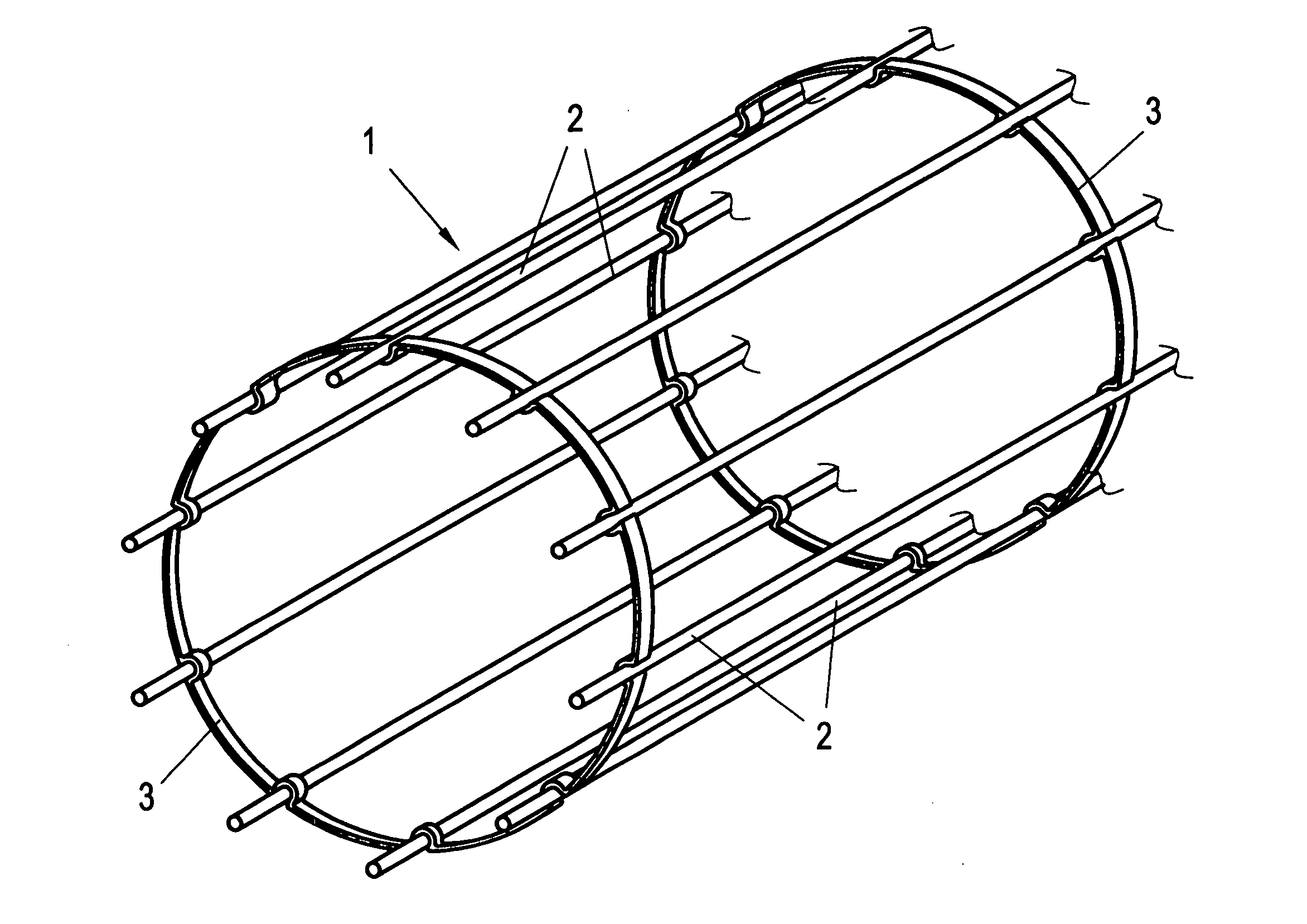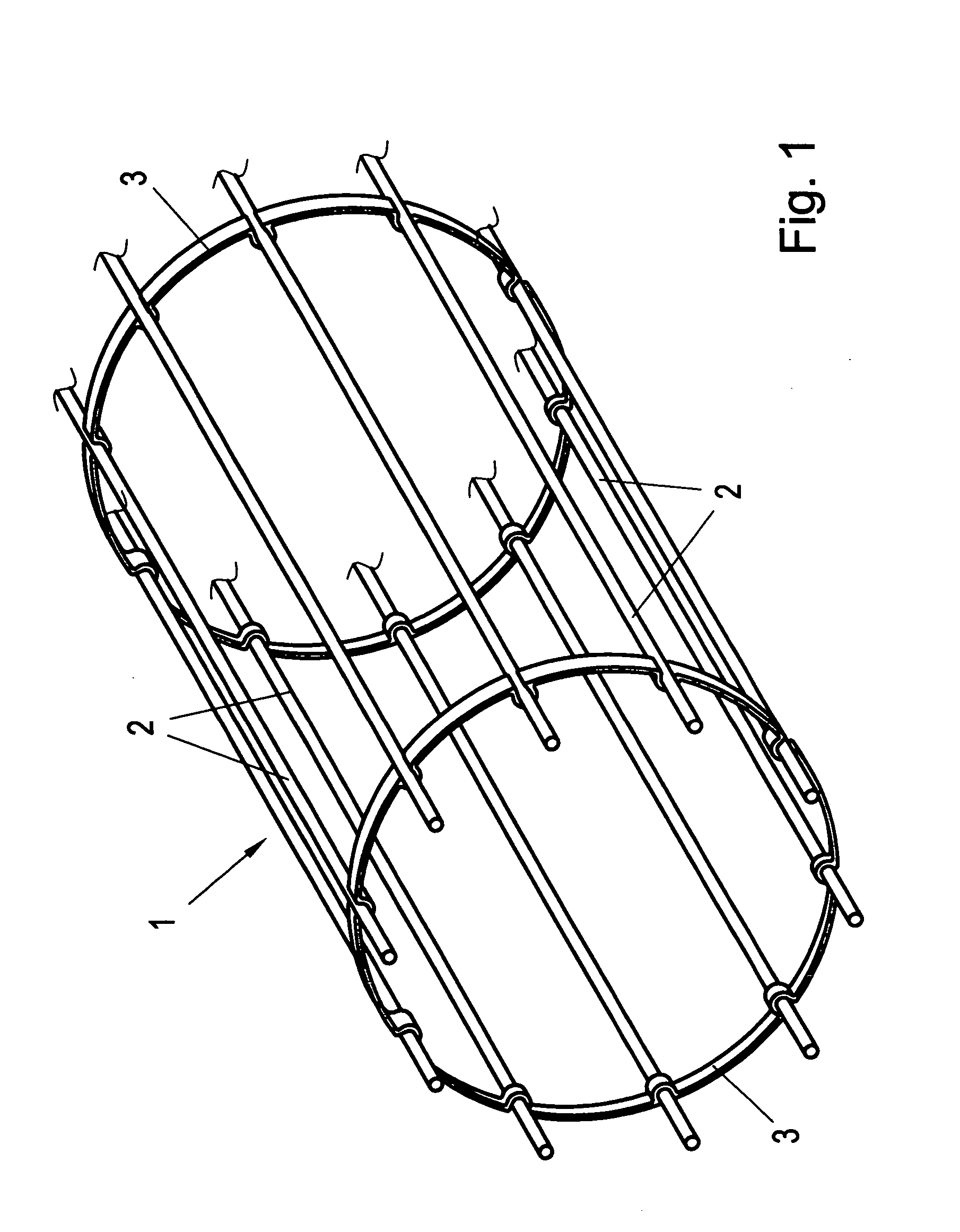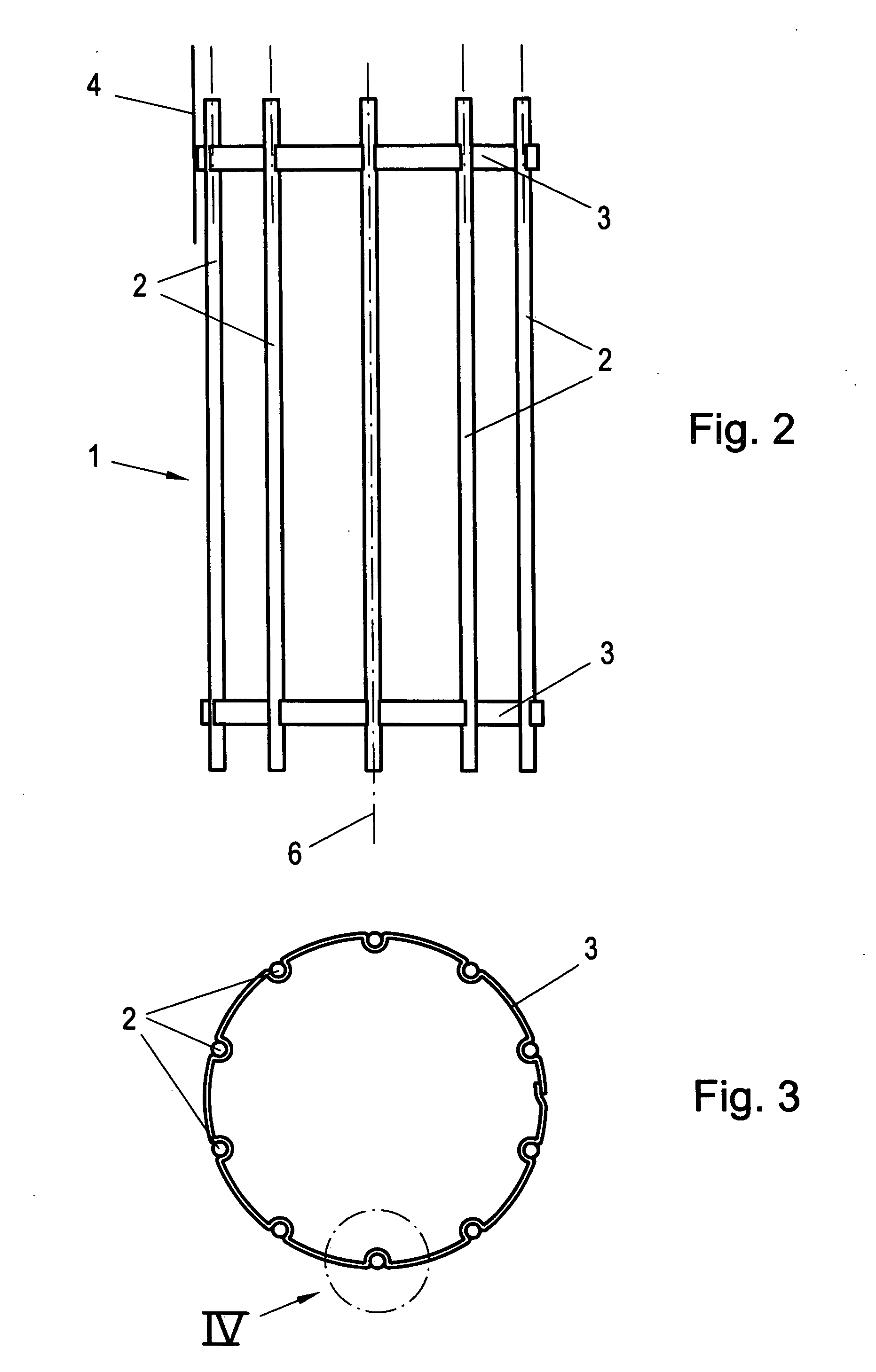[0007] It is now an object of the invention to provide a remedy for this situation and to propose a new construction of a bag filter supporting cage member as well as an appropriate method of production for the supporting cage member and an associated arrangement, wherein the supporting cage, optionally also a cage portion which is put together with other ones, can be finished on the location of
assembly and use of the filter systems in a simple manner from the rings and rods, so that the production is simplified and, more-over, the problem of transportation is solved since merely longitudinal rods and rings, i.e. elements which are compact to
package, are to be transported.
[0011] As has already been mentioned, known supporting cages have to be prefabricated in production plants far from the bag filter systems to be set up and then have to be transported to the location of the bag filter systems. For this transportation, the supporting cages usually are accommodated in wooden crates or in special transport baskets. The packages have heights of up to 1.5 m, and several
layers of supporting cages may be stored one on top of the other. Then the weight of, e.g., 9
layers of supporting cages, will rest on the lowermost supporting cage layer.
Impact loads occurring during loading and unloading and during the transportation itself necessarily will result in a certain percentage of damage. Likewise, manipulations carried out during packing and unpacking will cause damage. With a view to
extended storage times and longer routes of transportation, e.g. in case of transportation by ship, it is necessary to coat the supporting cages with a
corrosion protection means, with galvanizing treatments or also a
varnish coating being commonly used, apart from the fact that the supporting cages possibly have to be packed in sea chests. The high costs for packing and transportation involved therein just as the risk of a damage occurring during handling and during transportation and, possibly, the
corrosion protection which mostly is not necessary for the operation in the bag
filter system can be avoided by applying the technique according to the invention: a
corrosion-protected semi-finished product (galvanized or
copper-plated rods and rings, respectively) are delivered in compact packing units, and on location the supporting cage members or cages are assembled from the semi-finished products, shortly before the time of their installation. These semi-finished products can also be packaged at low costs in corrosion-protected manner in that it is shrink-wrapped so that—unless required for the operation of the bag filter
system—the application of a corrosion protection in form of galvanizing or
copper-plating can be omitted. The packaging expenditures for the transportation of the said semi-finished products are low so that the transportation will become extremely cost-effective. The packaging density (e.g. in kg / m3) increases in this manner to the twenty-fold, e.g., in comparison with supporting cages according to the prior art. Also this will result in substantially lower packaging and shipping costs. Furthermore, any risk of damage occurring during packing, transportation and unpacking is practically eliminated, since only handling of rods and rings, yet not of bulky, comparatively fragile supporting cages is required. Due to the fact that they will be assembled only after their transportation, the supporting cages can be made of longitudinal rods and rings of comparatively slight cross-sectional dimensions, since the aforementioned load thereon during transportation is omitted.
[0012] In the known supporting cages which in their finished state have to be transported to the location of the bag filter
system to be set up, the cages must not damage each other when being transported, when supporting cages arranged on top weigh down on the supporting cages below them during
impact loads. Therefore, a more massive construction with larger cross-sectional dimensions of the rings and longitudinal rods is required for the transportation of the supporting cages than would actually be needed for the filtering operation proper, e.g. longitudinal rods having a
diameter of 3 mm would suffice for the filtering operation, yet with the known supporting cages, rod diameters of 4 mm are required because of the mechanical loads occurring during their transportation. The supporting cage according to the invention with its special connecting technique allows for a production on location, and therefore—since no transportation-caused damage of finished supporting cages need be feared—a more light-weight production, e.g. with the said rod diameters of 3 mm, can be realized.
 Login to View More
Login to View More 


